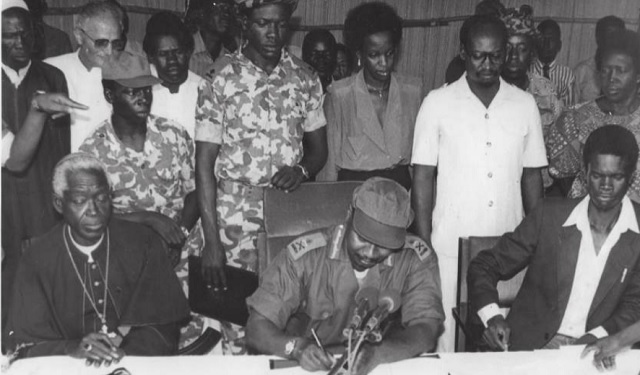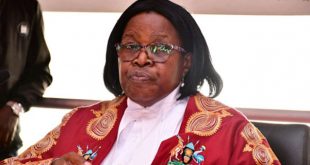
The year 1986 was a real defining moment for Uganda as it marked the end of political instability in most parts of the country.
It marked the beginning of the journey to the restoration of the Kingdoms in Uganda, the road to full-blooded democracy and constitutionalism, economic, educational and social advancement in Uganda.
1996 a defining moment
Under Museveni, the year 1996 was another defining moment as well as being a milestone for Uganda because it marked the beginning of holding general elections in Uganda. The democratic system of ‘one man one vote’ adult suffrage, which was shattered in 1966, was beginning to take root in Uganda.
It also marked the end of a Government of National Unity between NRM and DP, because Paul Ssemogerere broke away from the NRM government where he had served for nine years, first as Minister for Internal Affairs and later as Minister for Foreign Affairs. When General Elections were held in that year, Paul Ssemogerere was the Presidential candidate for DP and President Museveni was the candidate for NRM.
Two parties, DP and UPC, came to an understanding of sponsoring one Presidential candidate, Paul Ssemogerere. He was badly decampaigned by NRM supporters who told people- “if you elect Paul Ssemogerere, then Obote will come back and he is waiting at the Busia border.”
The NRM won the elections and Museveni continued as President up to the 2001 general elections. He has been winning all the subsequent elections, although some of them were challenged in the Supreme Court which ruled in his favour and nothing changed.
The year 2006 was another defining moment in a big way because it was the year of the revival of the multi-party system in Uganda. General elections were held in that year under the multi-party system which had been revived in 2005.
In 2005, all political parties registered at the Electoral Commission after the Constitution Court made a ruling that the Movement System was not a political party and the National Resistance Movement quickly registered as a Political Party as well as other political parties. There was also a referendum where Ugandans voted overwhelmingly to resort to the Multi-Party System. Right now, the Multi-Party System is fully entrenched in the Ugandan Constitution and it here to stay forever and ever.
Changes beyond 2016
Finally, Ugandans are now in 2016. This is another important defining moment for Uganda. It is possible major Constitution changes, including through a referendum, might be seen this year.
I have written this article tracing Uganda’s journey from 1962, through 1966 to 1986, 1996, 2006 and 2016. I have outlined the historical political events and changes that took place, because those years were milestone years in the history of this country.
In Uganda’s political journey to where we are now, we have seen history repeating itself because what happened between 1962 to 1985 is repeating itself again.
In 1966, President Edward Mutesa II fell out with Prime Minister Milton Obote whereas they were political friends at the time of Independence in 1962.
In 1996, Paul Ssemogerere who was the DP leader and was a Minister in President Museveni’s government disagreed with Museveni on the question of reviving the Multi-Party System and he left the Government. Ssemogerere stood against President Museveni in the Presidential Elections of 1996.
In the just concluded General Elections of 2016, the Country saw that two people who were good friends for almost 40 years, President Museveni and former Prime Minister Amama Mbabazi, fell out with Mbabazi standing against President Museveni in the 2016 General Elections.
Mbabazi, however, surprised Ugandans when he kept on saying during the election campaigns that although he stood as an independent on the “Go-Forward” platform, he was still a member of NRM.
In this political journey, we have seen the real meaning of the “Fundamental Change,” which President Museveni declared on January 29, 1986 when he was sworn as President in front of the Ugandan Parliament.
The Fundamental Change has brought the 30 years of political stability and social and economic development in Uganda. Sincerely speaking every Ugandan sees what has been done by the people economically and socially between 1986 and now, compared to the state the country was in between 1966 and 1986.
On the side of democracy, Uganda – like many other African countries – have done 45% well.
****
Kavuma-Kaggwa is an elder from Kyaggwe, Mukono District
Tel: 0772584423
 The Independent Uganda: You get the Truth we Pay the Price
The Independent Uganda: You get the Truth we Pay the Price



Since 1966- up today there is no peacefully hand over of power to another person alot of election reging.